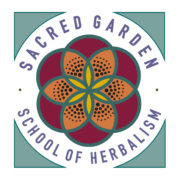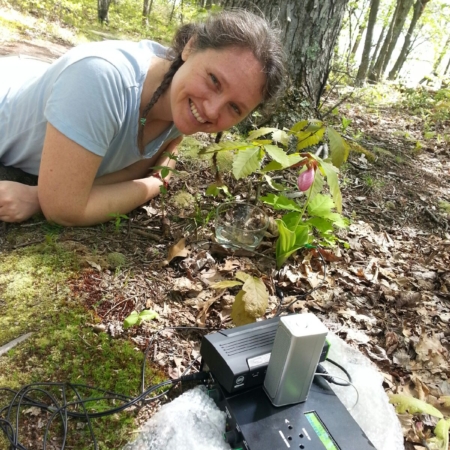UPCOMING EVENTS
Registration for Buds & Blossoms Program is now open

Sunday Morning Tea Ceremonies

with Silvy Franco
Join Silvy for a meditative ceremony to commune with Camelia sinensis. Come for quiet reflection as you sip on several cups of tea following Japanese tradition. Ceremony begins at 9:30 am and goes for an hour. Pre-registration is required.
Suggested Donation: $25
+++++++++++++
Community Medicine Making Circles

with Jen Halima
Come create botanical medicine and explore the foundations of herbalism. Build a home apothecary from locally grown herbs. You will make herbal oils, syrups, tea blends, tonics, nourishing treats and more!
6 Classes, next one July 26th
+++++++++++++
Intro to Plant Communication ~ Aug 8th
&
Flower Essences 101 ~ Aug 9th
with Teacher, Author, & creator of Brigid’s Way ~ Jen Frey

Intro to Plant Communication
(Aug 8th, 6:30-8:30pm)
When you attend this delightful class, you’ll learn:
~Plants are conscious beings who learn, have memory, and respond to their surroundings, including our emotions.
~Humans and Plants have a deep bond.
~Communicating with Plants is a tool for our individual and collective evolution and healing.
Flower Essences 101
(August 9th, 9 am- Noon)
During this interactive workshop we will:
~Explore the healing gifts of several Essences
~Make an Essence together which you will take home to continue your exploration of Flower Essences.




Ground Ivy
/in Herb of the Month /by Ashley DavisThis common, creeping perennial weed is something you’ve probably been cursing for years. It’s in everyone’s garden or lawn, and while it’s easy to pull up, its spreading nature keeps it on the annoying plant list for most people. And like most weeds, this one has an impressive amount of medicinal uses, including as a spring tonic to relieve seasonal allergies.
BOTANICAL NAME: Glechoma hederacea
COMMON NAMES: Ground Ivy, Creeping Charlie, Gill-Over-The-Ground, Alehoof, Cat’s Foot, Cat’s Paw, Gill-Go-By-The Hedge, Gillrun, Hay Maids, Hedge Maids, Lian Qian Cao, Lizzy-Run-Up-The-Hedge, Robin-Run-In-The-Hedge, Tun-Hoof, Turnhoof
FAMILY: Lamiaceae (Mint family)
PARTS USED: Leaves, flowers and tender stems
GROWING/HARVESTING/PROCESSING: Ground ivy is a creeping European perennial evergreen, naturalized in North America and found in moist shady areas, along paths, around hedges, and roadsides from Ontario to deep south, west to Kansas, and along the Pacific Coast. Cultivation: it is easily cultivated through root division and thrives in moist shady areas. Gather leaves, flowers and stems year-round. Can be dried for later herb use.
ETHONBOTANY/FOLKLORE/HISTORY: Ground ivy has a long history of use in alternative medicine and as an edible herb, dating back to the first century A.D. it was long considered a panacea (cure-all). Known for its hi vitamin C content it is said to be one of the first herb and edible plants brought to the North American continent by early settlers. Ground ivy was widely used by the Saxons instead of Hops in the production of ale, hence the name alehoof. Maude Grieve is of the opinion that this was because it improved the flavor and keeping qualities of the beer and also because it made the final drink clearer.
It also has a long reputation as an excellent tisane herb, where a tea is made from the herb which is then sweetened with honey, sugar or licorice and allowed to cool. It was often sold on the streets in Elizabethan England under the name ‘Gill Tea’. It was used in this era as a blood purifier. Interestingly, ‘Gill Tea’ was the name of the drink made by boiling together Ground Ivy and young Nettle shoots and drinking it for 9 consecutive days in the spring. This remedy was used to clear up skin complaints as well as in the form of a spring tonic.
ENERGETICS AND TASTE: light, astringent, aromatic, slightly bitter, cooling.
CHEMICAL CONSTITUENTS: Essential oils (limonene and menthone), flavonoids, triterpenes (alpha and beta ursolic acids and oleanolic acid), marrubiin which is a diterpene, and polyphenolic acids (rosmarinic acid), Vitamin C
ACTIONS AND PROPERTIES: Diuretic, astringent, nervine, anti-allergenic/antihistaminic, anti-inflammatory, antibacterial, antioxidant, antiseptic, antispasmodic, antiviral, expectorant, immune stimulant, sedative.
INDICATIONS: Ground ivy is an excellent spring tonic. It contains a volatile oil which aids in relieving congestion and inflammation of mucous membranes associated with colds, flu, and sinusitis and it can stimulate appetite.
CONTRAINDICATIONS: Do not use in excessively dry conditions – Ground Ivy can be very drying and would not suit people with an overly hot, dry disposition. Small doses of this powerful plant are recommended. (Potts). Reportedly toxic to horses and one case of human toxicity reported (Duke).
PREPARATION AND DOSAGE: Soluble in water, alcohol. Use as a tea, tincture, infused oil, bath, steam or compress.
Ground ivy tea or juice is well tolerated and can be given to small children. The dosage for ground ivy is 2-4g dried herb or equivalent liquid extract three times per day.
Recipe for colds and flu: Express fresh juice with press. Take 1 tsp. 3 times a day, ½ tsp. for children. Use 2 or 3 drops in nose twice a day for sinusitis. 3-5 drops of tincture daily is used for toning the female reproductive system.
REFERENCES: